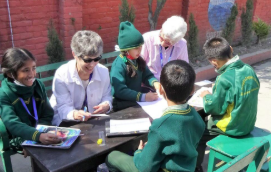One of the most rewarding parts of learning a new language is being able to use it in everyday situations. Whether you’re ordering food, asking for directions, or having a casual conversation, applying what you’ve learned in real life helps solidify your skills and boosts confidence. Here are practical ways to bring your language learning into real-world use.
1. Practice at Local Shops and Restaurants
If there are stores, markets, or eateries in your community where your target language is spoken, visit them regularly. Start with simple interactions like greetings, ordering, or asking about items. Even brief exchanges help build confidence.
2. Join Language Meetup Groups
Look for language exchange events, conversation clubs, or cultural meetups. These are great places to practice in a supportive environment. You can also meet native speakers who are often happy to help learners improve.
3. Simulate Daily Tasks at Home
Turn routine activities into language practice. Label items around your house, narrate your actions, or write to-do lists in your target language. These small habits make vocabulary and sentence structures feel natural.
4. Watch and Respond to Media Content
Watch news segments, vlogs, or TV shows in the language you’re learning. Pause and repeat what you hear or describe what’s happening. This trains your ear and helps you respond quickly to everyday topics.
5. Role-Play Common Scenarios
Practice role-playing with a friend or tutor. Act out scenarios like booking a hotel, ordering coffee, or introducing yourself. This prepares you for actual conversations and improves fluency.
6. Volunteer or Work in Multilingual Settings
If possible, volunteer or take part-time roles where the language is spoken. Helping out at cultural events, festivals, or community centers offers authentic exposure and meaningful practice.
7. Use Social Media in the Target Language
Follow influencers, educators, or news sources who post in the language you’re learning. Comment, like, or even share posts. Writing brief responses helps reinforce spelling and vocabulary.
8. Travel or Take Virtual Tours
If travel is possible, immerse yourself in a region where the language is spoken. If not, explore online tours and virtual events. These offer cultural context and provide real-life vocabulary exposure.
9. Talk to Yourself in the Language
Self-talk is a simple yet effective strategy. Describe your day, make decisions aloud, or talk through your thoughts. It helps build fluency and bridges the gap between knowledge and usage.
10. Keep Practicing Without Fear
Don’t worry about making mistakes. Real-life use is about progress, not perfection. Every interaction is a chance to learn, grow, and communicate better.
Bringing your language skills into daily life makes learning practical, enjoyable, and long-lasting. Use these methods regularly, and you’ll see real improvement in your ability to understand and communicate with ease.


